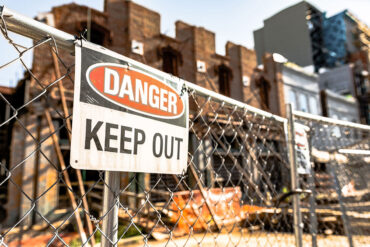
Certificates of Merit May Offer Some Defense and Insights
In Claims onRead moreTo prevent unmeritorious errors and omissions claims from proceeding against licensed professionals, including licensed professional engineers, a minority of state legislatures have passed statutes requiring the filing of an affidavit or certificate of merit by the plaintiff that supports their contention that they have a valid legal claim against the defendant engineer.
0
Claims Retrospective: Engineers Should Recognize High-Risk Projects and Take Added Measures to Protect Themselves
In Claims onRead moreThere has been an increase in claims involving high-risk projects in the past few years. Additionally, more engineers who do not typically take on high-risk projects are willing to do so. However, these engineers do not always account for the higher risk involved and tend to approach such high-risk projects in the same fashion as smaller projects, without taking additional measures to protect themselves.

Pre-Litigation Disclosure of Insurance Information: To Do or Not to Do?
In Documentation onRead morePotential and actual claimants and their counsels often request or even demand an engineer’s professional liability insurance information prior to the initiation of litigation and, in some instances, prior to even sending a demand letter.

Claims Retrospective: Engineers Should Be Prepared for Boomerang Claims
In Claims onRead moreSometimes, claimants or their counsels cast a wide net at the beginning of a dispute, sending demand letters and/or filing litigation against every party involved with a project, including the engineers and other design professionals.

It Can Be Perilous to Agree to Defend and Indemnify Another Party in a Written Contract
In Contracts onRead moreMost engineers recognize indemnification clauses can be problematic. Under any normal professional liability policy, such as the forms used by Certain Underwriters at Lloyd's of London, there is no coverage for liability assumed under a contract or agreement unless the insured would have such liability in the absence of a contract.

Claims Retrospective: Fee Disputes Often Lead to Retaliatory Actions Against Engineers
In Claims onRead moreWaiting for payment for services rendered can quickly become frustrating if the client is slow to pay, or never sends payment at all. Choosing to take a client to court for non-payment can lead to other challenging issues that should be considered.

Litigation Holds: Engineers May Have a Duty to Preserve Documents and Other Potential Evidence Prior to the Initiation of a Lawsuit
Read moreCompliance with a "litigation hold" generally means preservation of certain documents which may be relevant to a lawsuit. When a litigation hold is in place, parties must suspend their routine destruction of documents and preserve all documents for examination by another party.

Professional Corporations Do Not Always Protect Licensed Engineers From Liability
Read moreOne of the purposes of creating a corporate entity is to limit the liability of those individuals involved with the corporation. Engineers often believe the professional corporation will protect them from liability, in other words, the corporation is liable, not the individual. Unfortunately, that is not always the case.

Claims Retrospective: Identify and Document the Work You’re Hired to Do—and Not Do
Read moreIt is not unusual to discover problems outside a project's scope of work that may adversely affect the outcome, especially when the project involves an aging building or the property around it. Nor is it uncommon to find clients who do not wish to pay for remedying these "other" problems.

Jurisdictions Where the Economic Loss Doctrine Bars Extra-Contractual Claims Highlight the Importance of Well-Drafted Contracts
Read moreThe economic loss doctrine is the legal principle that economic loss may not be recovered under a negligence or tort theory. “Economic loss” has been defined as damages for inadequate value, cost of repair and replacement of a defective product, or the consequent loss of profits, as well as the loss of value of the product due to its inferior quality.
